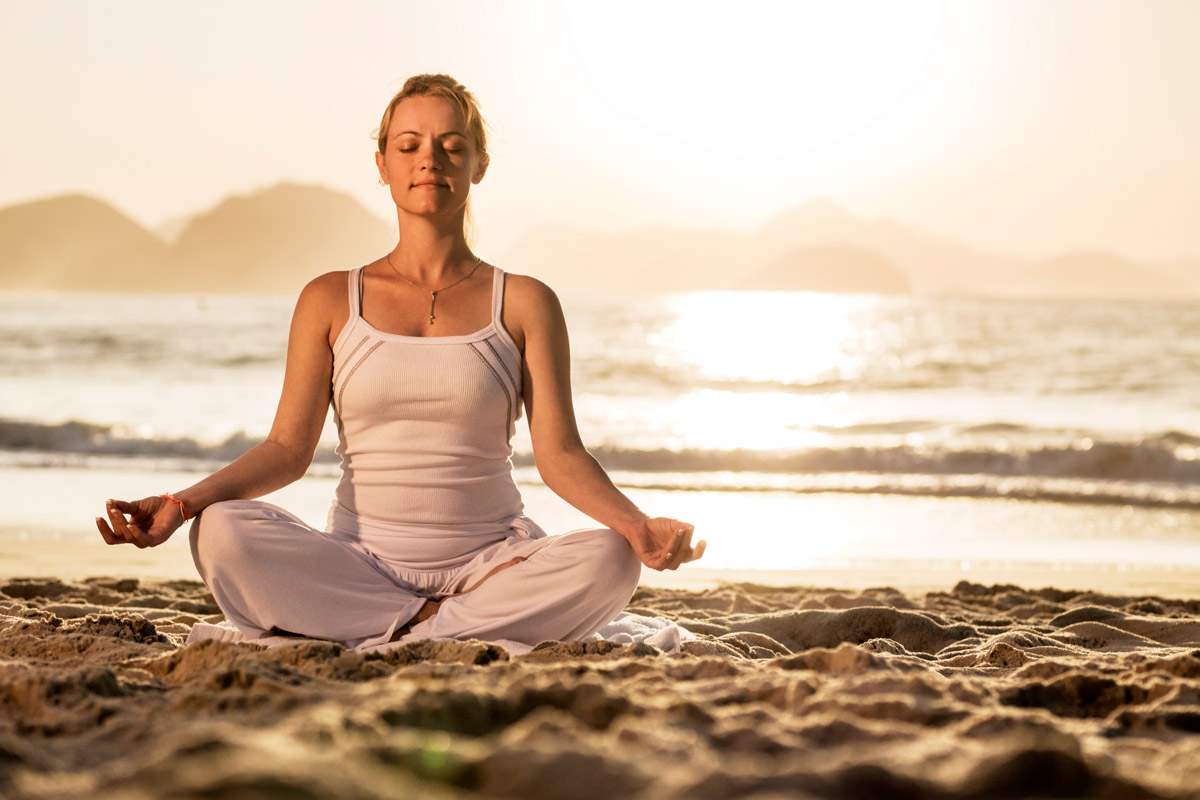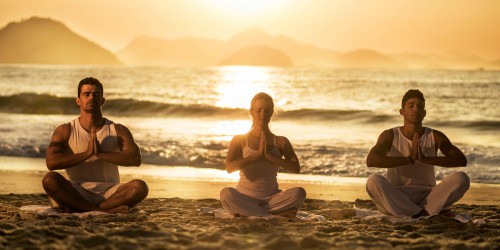Meditation is a much broader subject than you might think, with a number of different ways to meditate as well as a variety of motives and intentions. Many people associate meditation with religious practices, which in most cases is true, yet the widespread rise of meditation in the western world has perhaps more to do with seeking stress relief and general peace of mind in a crazy world than finding God or enlightenment (although many who start on the journey of meditation to relax eventually find themselves on some kind of spiritual path).
Discovering what kind of meditation is right for you will be a question of trial and error, or destiny, if you believe in that. You might stumble upon a class that suits your schedule or research different types of meditation and then look for a group or class near you. The internet is also a great place to start to discover different methods that you can try at home. Although meditating in a group is a powerful activity, ultimately, meditation is a personal practice, so it is only right that you take time to find a method that fully suits you.
Seated Meditations
One of the most popular forms of meditation, and often what most people who are unfamiliar with meditation assume all meditation to be, is seated medication. This is the basis of zen or zarzen meditation, which simply means “seated meditation.” Seated meditations can be carried out sat in a comfortable position with a straight spine so that the rise and fall of your breath is unhindered. Better still, make sure your neck is straight and your chin is tucked in and not sticking out. Many methods suggest that sat cross-legged or in the lotus position is the most beneficial position, yet in practice, sitting upright in a chair or lying down (if you can be sure you won’t fall asleep) are also acceptable.
Once you are in a comfortable position, you can begin by focussing on your breath, watching the rise and fall of your chest with your eyes closed or focused on a point on the horizon with your eyes open. The idea is to allow thoughts to simply pass through your mind without giving them any attention until the mind becomes clear.
Vipassana
Vipassana is another meditative practice that is often (but not always) performed seated. Vipassana means “to see things as they really are” and the focus is to simply observe our bodies, our surroundings and the relationship between our mind and body without attachment.
Guided Meditations
Other popular types of meditation are those where you are guided on a psychological journey, visualizing scenarios or images to help deepen your meditative practice. Traditionally, guided meditations would have been led by a guru or some kind of spiritual teacher, while today, more and more secular personalities offer guided meditations and therapeutic explorations of the mind.
Some guided meditations will ask you to visualize love expanding from your heart until it bathes your whole body, emitting outwards to include the room, then your building, then your city etc. Others are journeys into your unconscious mind, where you begin in nature and are guided on a dream-like path to meet your inner guides or perform other activities. While others are simply the words of a master or guide helping you to focus on your breath to deepen your sense of calm while clearing your mind. These are just three basic examples, in reality, there are endless guided meditations. Just look on youtube and you will see a whole host of options.
Sound Aided meditations
Another genre of meditation relates to those techniques that use sounds or music. The most basic yet effective example of how sounds can be used in meditation would be the repetition of the sacred Om, considered the vibration of the universe by many Eastern religions and philosophies. Many yoga practices and other types of meditations begin with this simple mantra to connect with the source of existence. Gongs have also been used as a form of meditation for a similar purpose.
Transcendental meditations take this idea of using sounds and mantras one step further, using mantras or repeated phrases that are selected by a guru for a particular person. In Kundalini yoga, mantras are frequently used in conjunction with mudras (hand and finger positions) and poses to deepen the benefits of the meditation.
Moving Meditations
Moving meditations are a popular form of meditation most commonly associated with practices such as tai chi and qigong, which aim to aid the flow of “chi” or energy throughout the body. Both are types of martial arts, with the intention to align the body, breath and mind to create balance through movement. Walking meditations are also a great way to connect with your inner landscape.
The late teacher/guru, Osho, was a key advocate of moving meditations, which involved dancing and other movements following a strict order. You might shake for 10 minutes, followed by releasing tension by shouting or speaking gibberish, followed by dancing without form with your eyes closed, to finish in a frozen pose, depending on the meditation you are following.















